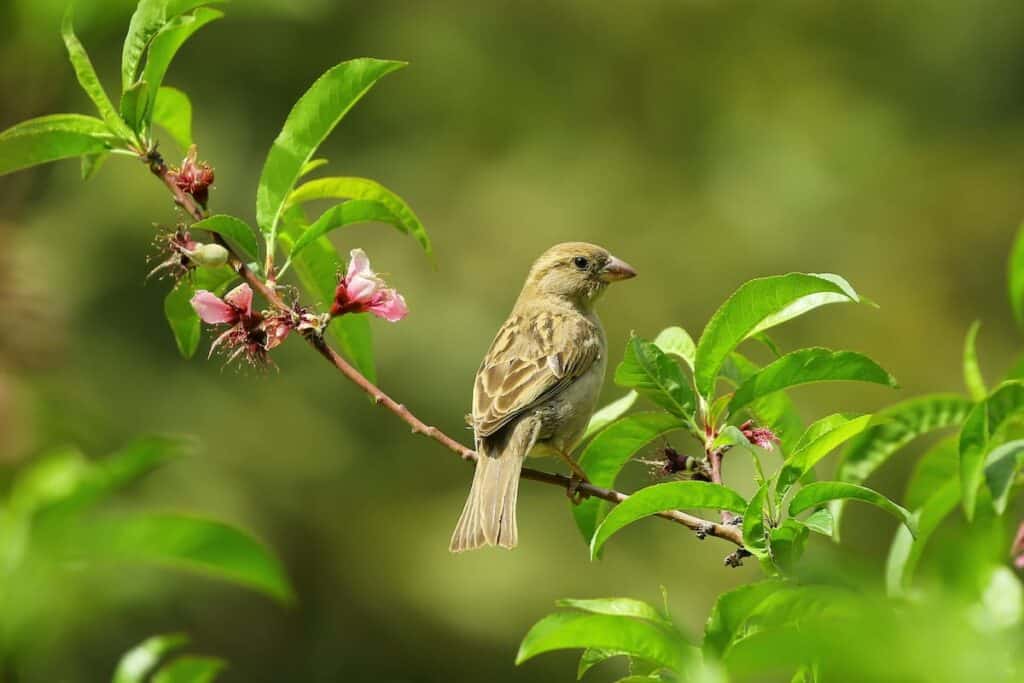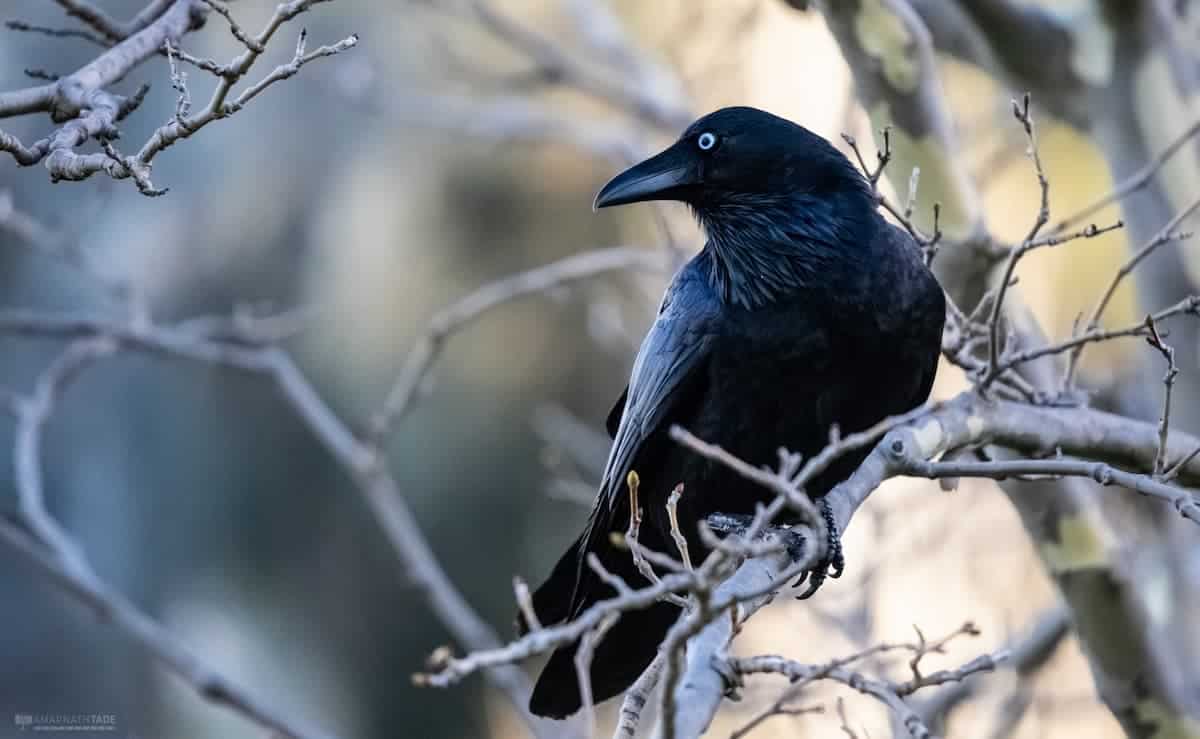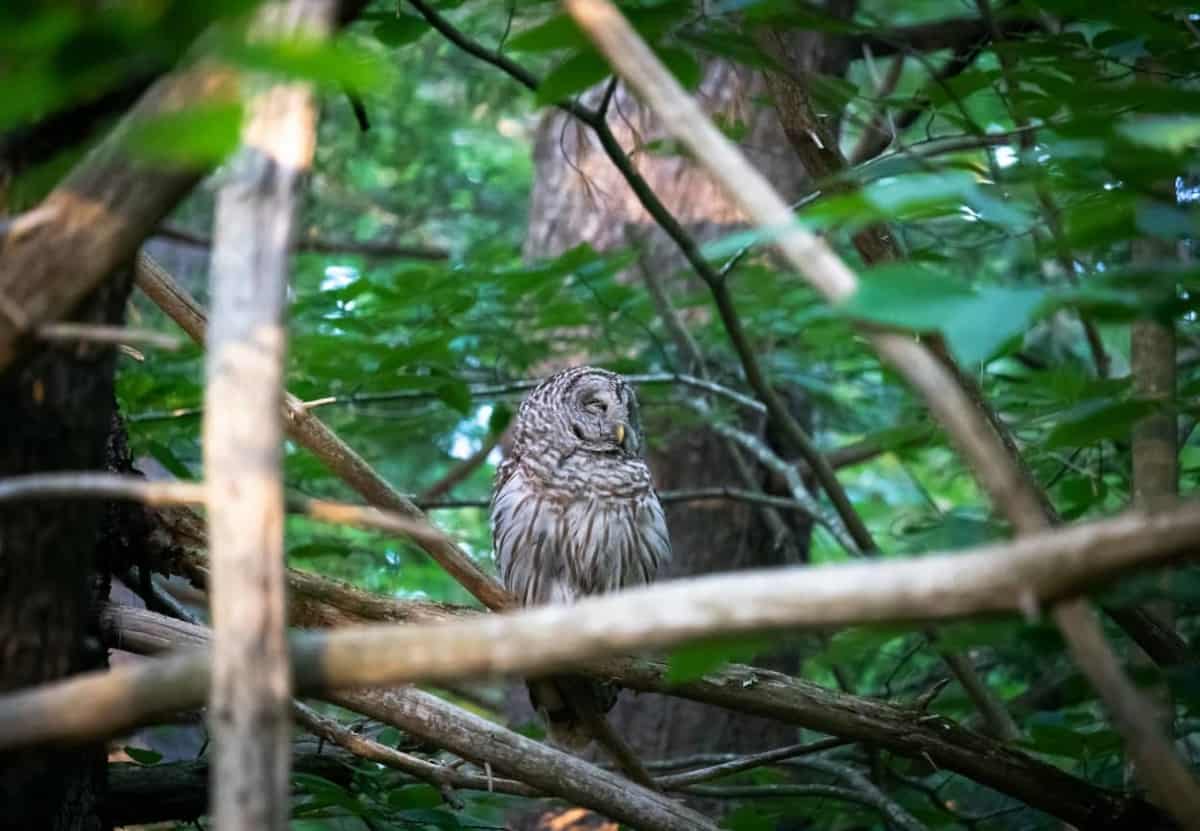Sparrows tend to disappear at dusk, which leads many people to wonder where sparrows sleep at night.
Most sparrows sleep in dense foliage or cracks and crevices in trees and other outdoor objects, including man-made structures. Sparrows also make nests from dried vegetation and sleep in the nests during the breeding season.
As with many species of bird, sparrows sleep in a variety of different places. Yet, different species of sparrow sleep in different areas. There are at least 35 species of sparrow in North America and dozens more across the globe.
Where do sparrows sleep at night in the winter?
All Sparrows sleep in dense foliage or cracks and crevices in trees and other outdoor objects, including man-made structures like bird boxes. Sparrows also make nests from dried vegetation and use these during the breeding season. If it is particularly a cold night sparrows have been known to huddle together with other sparrows.
Sparrows Sleep in Different Spots Throughout the Year

Where sparrows sleep depends on the time of the year, as sparrows often sleep in nests during the breeding season and roost outside of the breeding season.
A roost is a place where sparrows congregate to sleep at night. Roosting sites typically include trees and shrubs. The birds may sleep on the branches and twigs. However, the nests are typically constructed inside a tree cavity, especially in rural areas.
Yet, about two-thirds of the sparrow population may reside in urban areas. Sparrows that live in urban areas are more likely to roost and nest in man-made structures. These birds are highly adaptable and can find places to sleep in the holes of old sheds and garages. They can also feed on scraps of food and trash.
Sparrows may only spend a few weeks roosting outside of nests. This is especially true for house sparrows. House sparrows sleep in their nests almost year-round.
House sparrows use the nest in the spring and summer for resting at night and raising their young. They may continue to use the nest throughout most of the fall and winter.
Sparrows Construct Nests in Holes for Sleep and Nesting
During the mating season, sparrows sleep in their nests. While many species of birds build nests on tree branches, sparrows typically construct nests inside holes, such as the cavity of a tree. Most nests are made with dry grass and lined with feathers, string, and hair.
Sparrows may also build nests in holes of man-made structures, such as a hole in an old farm building. Some people also build nest boxes. A nesting box is typically a wooden box secured to a post or a tree.
Nest-building activity typically occurs in the early spring and again in the fall. Sparrows sleep in the nests at night but may start in a different roosting spot, such as a nearby tree. The sparrows congregate and chirp as the sun settles. After dusk, they travel to their nests to settle in for the night.
Sparrows Are Known to Take Over Other Nests for Sleep and Food
Sparrows are often considered an invasive species. They are aggressive to smaller species of birds, including bluebirds and purple martins. The sparrows may take over other nesting sites for shelter and better access to food.
Sparrows travel in larger flocks compared to many other species of birds, which allows them to easily overtake smaller animals. They may even build new nests on top of the nesting sites of their victims.
Sparrows Often Sleep with the Same Group of Birds
Sparrows are highly social birds and often sleep with the same flock. For example, the house sparrow typically sticks with the same hierarchically organized flock throughout its lifetime.
Sparrows Sleep in Areas That Provide Warmth and Protection
Sparrows that do not nest year-round may sleep in different spots each night. These birds do not typically travel far during the day and prefer to sleep in areas near their feeding spots.
Sparrows seek shelter in areas that protect them from cold weather and predators. However, they stay within range of their feeding spots to secure their territories and prevent other birds from taking over.
For example, a group of sparrows may spend the day within a radius of a few miles and return to the same tree or group of shrubs each night for sleep.
Sparrows Choose Stopover Spots for Sleeping During Migration

Some species of sparrow, such as the American tree sparrow, migrate south for the winter. Instead of sleeping in the same spot each night, the birds need to find a new place to call home throughout the migration period.
Toward the end of the night, as the birds begin to feel fatigued and famished, they look for a suitable stopover site that offers ample food and shelter from weather and predators. The stopover sites are often trees and shrubs, but sparrows may also temporarily roost in holes in buildings or trees before continuing their migration.
Sparrows get much less sleep during the migration period. For example, the white-crowned sparrows travel over 2,670 miles (4,300 kilometers) each winter. They travel from southern California to Alaska in the spring and make the return trip in the fall. During this lengthy trip, the sparrows only get about one-third the amount of sleep that they receive during the rest of the year.
Sparrows Take Naps Instead of Sleeping Through the Night
Sparrows and many other species of birds do not sleep through the night. They take frequent, short naps. Unlike humans, sparrows have short rapid eye movement (REM) cycles. A REM cycle is a period of deep sleep.
For humans, the final REM cycle lasts about an hour. For sparrows, most REM cycles last just over two minutes. Instead of a deep slumber, sparrows rest to conserve energy. This also allows them to quickly become alert if a threat arises, such as a predator entering the area.
Conclusion
Where do sparrows sleep throughout the year? During mating season, they typically sleep with their nests. The nests are often constructed in tree cavities and the holes of other structures, such as sheds, garages, and other buildings.
After the eggs hatch and the young chicks mature, the sparrows may choose a new place to sleep. They may sleep in a different spot each night but typically remain close to their feeding spots.
Outside of nests, sparrows may sleep on the branches of trees and shrubs. Sparrows are small birds that can sleep with their beaks tucked into their feathers.





